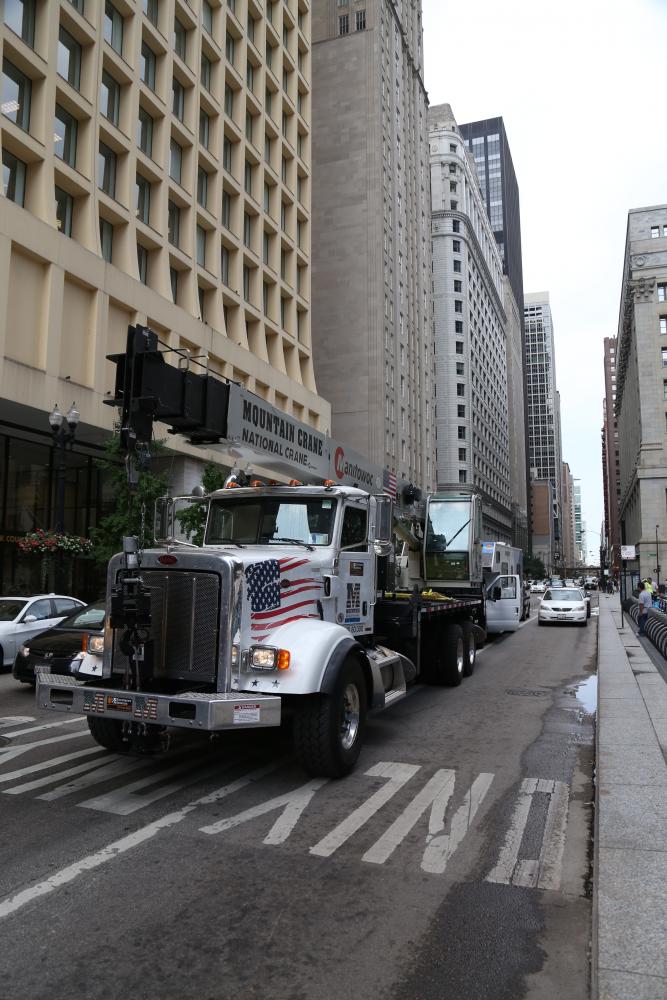

A National Crane 1300A boom truck crane recently completed a U.S. tour with foundation pieces from the World Trade Center buildings that collapsed on September 11, 2001. Salt Lake City, Utah-based Mountain Crane Service used the 30-ton boom truck to lift the two pieces, one weighing 12,000 lbs and one weighing 13,000 lbs, onto a flatbed truck for visitors to view in 31 different cities. At each stop, the 1300A raised a custom-designed, 400-lb. American flag and flag beam over the pieces, completing the visual display.
“We needed a crane that was durable enough to drive 9,100 miles over six weeks through 31 cities,” said Paul Belcher, co-owner and CEO of Mountain Crane. “The 1300A handled everything that we threw at it day in and day out. In addition, easy maneuvering in places like small-town America and the tight tolerances of cities including Chicago, St. Louis, and Indianapolis was the key to our choosing this crane.”
Along the way, the 1300A stopped in more than 40 different locations in the 31 cities, including sites in Chicago, Florida, and Texas. The pieces of the World Trade Center’s foundation were shown at baseball games, car races, and town square occasions, among other events. A special partnership with the Fallen Warrior Foundation had the crane and artifacts on display at a memorial site in Kansas, honoring those killed in Afghanistan and Iraq, for example.
The convoy set out on August 31 and reached its final destination on September 23. At the conclusion of the tour, the 1300A removed the pieces and placed them on trucks headed to their final destinations. Belcher said the crane performed well and is a valuable tool in Mountain Crane’s fleet.
“We’re a fan of the National Crane brand because it handily serves specific needs within our fleet,” Belcher said. “The outrigger pads were very well positioned on this trip, for example, which made for more efficient lifts.”